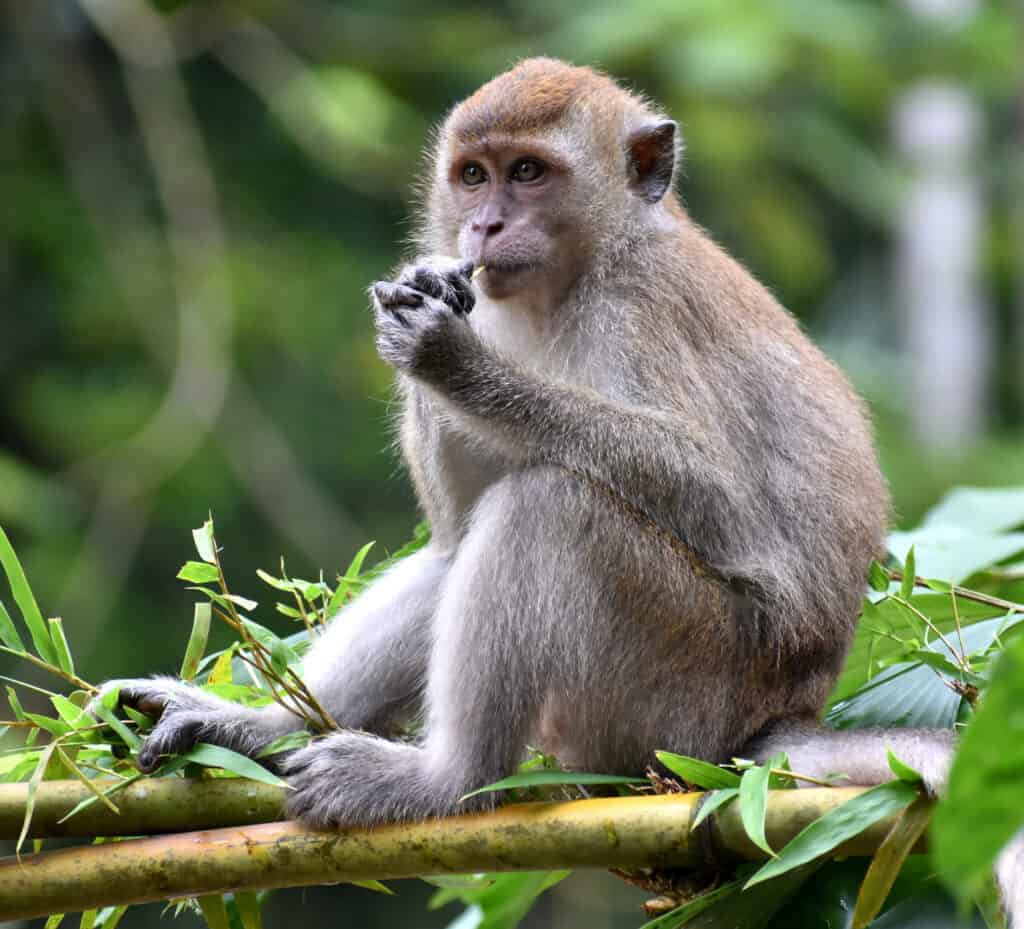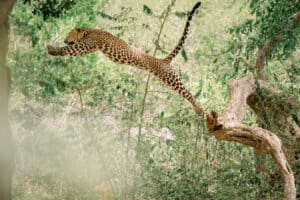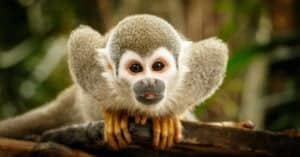Primate supremacy on Earth is mostly due to the estimated 7.8 billion people that live here and alter its landscape. The most recent outcome of a rigorous process of primate evolution is the presence of humans among the more than 200 species of primates that walk the planet today. However, the tale of these primate species and subspecies is much less triumphant, hidden beneath this unmistakable sea of humans.
Our closest living relatives — apes, monkeys, lemurs, and other primates — are under unprecedented danger from the collapse of tropical forests, illicit wildlife trade, and commercial bushmeat hunting. Although you may be familiar with monkeys, you probably don’t know much about some of their extinct species. So, which ones are they?
More than 200 species of tailed primates exist, including monkeys. Old World monkeys and New World monkeys make up their two main subgroups. After splitting off from Old World monkeys about 40 million years ago, New World monkeys emerged more recently in evolutionary history. Unfortunately, some species from these two subgroups have vanished from our planet. In this article, you will discover the 3 extinct species of monkeys and other interesting facts.
3 Extinct Types of Monkeys
1. Ucayalipithecus Perdita
Ucayalipithecus Perdita, which translates to “lost monkey of Ucayali,” was a member of the Parapithecidae family, whose members had never before been discovered in the Americas. But a pair of monkey teeth from Peru is one such interesting fossil described by an international team of researchers, and its age is around 31.7 million. Its nearest living relative was the Egyptian species Qatrania wingi, implying that the original home of Perdita was probably in Africa.
This creates a strong paradox. How did monkeys so closely related to each other end up living as far apart as North Africa and South America, separated by large stretches of land and 932 to 1,242 miles of the ocean? The researchers, under the supervision of Professor Erik Seiffert at the University of Southern California, make a compelling case that the new fossils offer the first evidence that ancient monkeys crossed the Atlantic more than once.
2. Jamaican Monkey (Xenothrix mcgregori)

The Jamaican monkey was endemic to Jamaica.
©A. C. Tatarinov / CC0 1.0 – License
The extinct New World monkey species known as the Jamaican monkey (Xenothrix mcgregori) was endemic to Jamaica. There was little information available concerning the origins of the odd Jamaican primate, which was driven to extinction by human action hundreds of years ago. Nobody has been able to agree on where it came from or what other species it was most closely related to since it was deemed so unlike any surviving primate today, with short, rodent-like legs and a squat body like a slow loris.
The good news is that ancient DNA was able to be extracted from the fossils and ultimately determine its evolutionary position. The South American titi monkeys, which arrived on the island some 11 million years ago, are now believed to be the Jamaican monkey’s closest relatives. These New World monkeys stand apart from their Old World ancestors because they have flat noses, and they are the lone monkeys to have evolved a prehensile tail that can grip branches.
3. Hispaniola Monkey (Antillothrix bernensis)
An extinct primate known as the Hispaniola monkey (Antillothrix bernensis) was only found on the island of Hispaniola, which is now the Dominican Republic. Around the 16th century, the species was assumed to have become extinct. Although the precise timing and cause of the extinction remain unknown, it is most likely connected to the European colonization of Hispaniola after 1492.
The Hispaniola monkey was initially believed to be closely related to capuchin monkeys, but further research revealed that the similarities resulted from convergent development. The capuchin-sized Hispaniola monkey was a tree-dweller who mostly thrived on fruit and leaves. They undoubtedly evolved a flexible adaptation to their island habitat, allowing them to survive for more than a million years; they most likely lasted when people initially settled on the Greater Antillean Islands.
What Are the Factors that May Lead to Monkey Extinction?

The degradation of tropical forests is a factor that may lead to the extinction of monkeys.
©iStock.com/Michael Carr
With almost eight billion people residing in nations where primates are present, the threat of extinction is primarily due to human population growth. The biggest dangers are habitat loss and the clearing of tropical forests, which also contribute to climate change by emitting at least 20% of the world’s greenhouse gases. The preservation of forests should be a top priority since they safeguard fertile soils and clean water, reduce climate change’s effects by absorbing carbon dioxide from the atmosphere, and provide local communities with resources and sustainable economies. Cutting down forests is a faster way to make money, but in the long run, it leads to the extinction of species that depend on this ecosystem.
While the degradation of tropical forests has traditionally been the main factor, hunting increasingly seems to pose a serious threat in some locations, even where the ecosystem is still mostly undisturbed. Hunters sell monkeys as exotic pets, zoo animals, or for use in biomedical research. Primate body parts are frequently traded by hunters for meat, traditional remedies, and trophies or for use in folk magic. Quite literally, primates are being eaten out of existence in many places.
Diseases are another issue that affects monkeys, many of which can be transmitted to humans. Lastly, invasive species pose a significant concern, as some primate species are brought into ecosystems that are not their own by pet monkey collectors.
Why Is it Important to Save the Monkeys?

Monkeys play an important role in the ecosystem.
©iStock.com/DejaVu Designs
Monkeys are crucial to the ecosystems in which they live. They are the closest living biological relatives we have, providing crucial insights into the biology, behavior, and evolution of humans while also significantly impacting many countries’ livelihoods, customs, and religions. Primates contribute to maintaining a wide variety of plant and animal life in tropical forests worldwide through pollinating flowers, spreading seeds while they move around, and other interactions within their habitats. For local human populations, healthy forests are a significant source of sustenance, and they also absorb and store the carbon dioxide that drives climate change.
Summary of 3 Extinct Types of Monkeys
Here’s a recap of the three sadly extinct monkey species that we took a look at.
| Number | Monkey Species | Scientific Name | Closest Relative |
|---|---|---|---|
| 1 | Ucayalipithecus Perdita | Ucayalipithecus perdita | Egyptian species Qatrania wingi |
| 2 | Jamaican Monkey | Xenothrix mcgregori | South American titi monkeys |
| 3 | Hispaniola Monkey | Antillothrix bernensis | Initially believed to be closely related to capuchin monkeys |
The photo featured at the top of this post is © PhotoZeli/Shutterstock.com
Thank you for reading! Have some feedback for us? Contact the AZ Animals editorial team.







